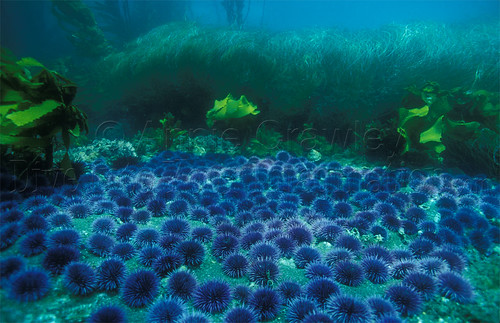 |
| Photo of an urchin barren from The Echinoblog |
Later that day we had a guest lecture from Zach Randell. He talked about the role of kelp forests and his experiences doing scientific research within them.
 |
| An example presentation |
Thursday was exam day for our Community Ecology Section, and then free time afterwards to enjoy the nice weather. We got most of the class out on the basketball court playing Bump, a game where you try to score a basket before the person behind you in line. It was a great way to de-stress after the test and bond as a class.
Friday was the first day of our Conservation and Policy course. In the first lecture we learned about the state of our oceans where we learned about how the oceans are not doing as well currently as they were in the past due to a variety of human activities such as overfishing, pollution and ocean acidification due to rising carbon dioxide levels in the atmosphere. Our second lecture was on climate change and its impacts on the ocean. The third lecture of the day was about how marine reserves and marine protected areas were designed and chosen. In the fourth lecture we then talked about how marine reserves were designed and implemented in the state of Oregon. We discussed the different stakeholders and what demands they had upon the placement of the marine reserves. They needed to be placed somewhere that would protect enough habitat to keep species richness high and to boost the productivity of the fisheries in the surrounding area. We ended the day with a brief lecture on sea birds in preparation for our field trip on Monday morning.
By David Fletcher and Nick Patrick
1 comment:
Underwater life is amazing and yet more to explore. You guys are doing fantastic job by discovering and informing us about their life. your blog-posts are informative. Keep posting.
Post a Comment